When fishing your favourite lake, have you ever looked into the water and observed tiny reddish-orange or light green “bugs” twitching through the water column? Or filled a bucket with lake water that appears to be alive with little red dots? These minute creatures are commonly referred to as water fleas. More formally known as zooplankton, they are minuscule members of the crustacean family that also includes crayfish and freshwater shrimp.
Daphnia are the most common zooplankton we see in productive trout lakes. Although tiny (less than two millimetres in length), daphnia are found in very dense congregations. Trout, kokanee, and brook trout ingest them in large numbers, particularly during the warmer summer months.
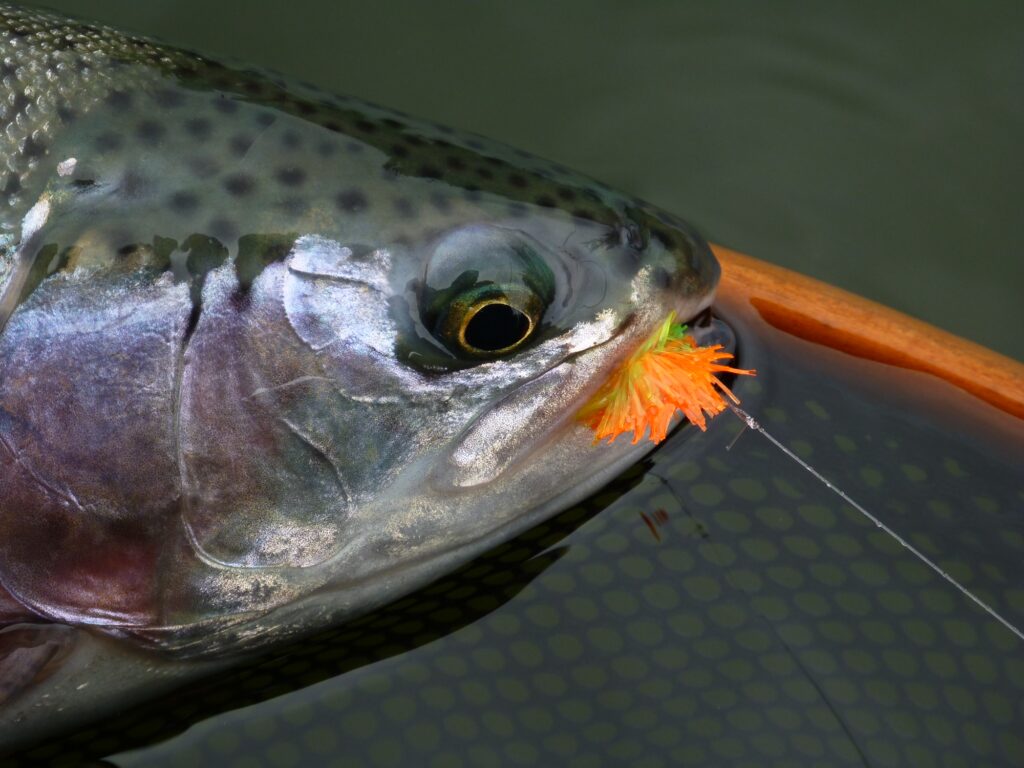
Daphnia and other species of zooplankton are sensitive to light. During the daytime, they will be found at greater depths, but at night will move up towards the surface. They often gather in globular clusters that can be as small as a golf ball, or as big as a large beach ball. Trout and other fish make easy meals of them by just swimming through these congregations, filtering out the zooplankton with their gill rakers, and passing them into their guts.
Blob Fly Patterns
Imitating a single tiny water flea would be next to impossible, but how about a fly pattern that resembled a ball of zooplankton? Creative fly tiers in the United Kingdom (the acknowledged birthplace of stillwater fly-fishing) have developed innovative “blob” patterns that give passing fish the illusion of an almost irresistible zooplankton appetizer.
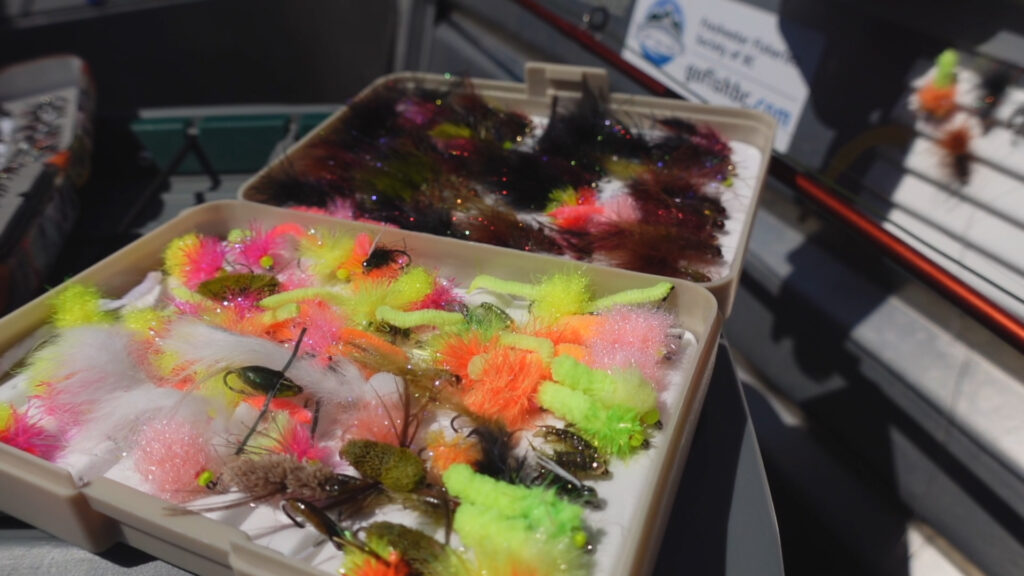
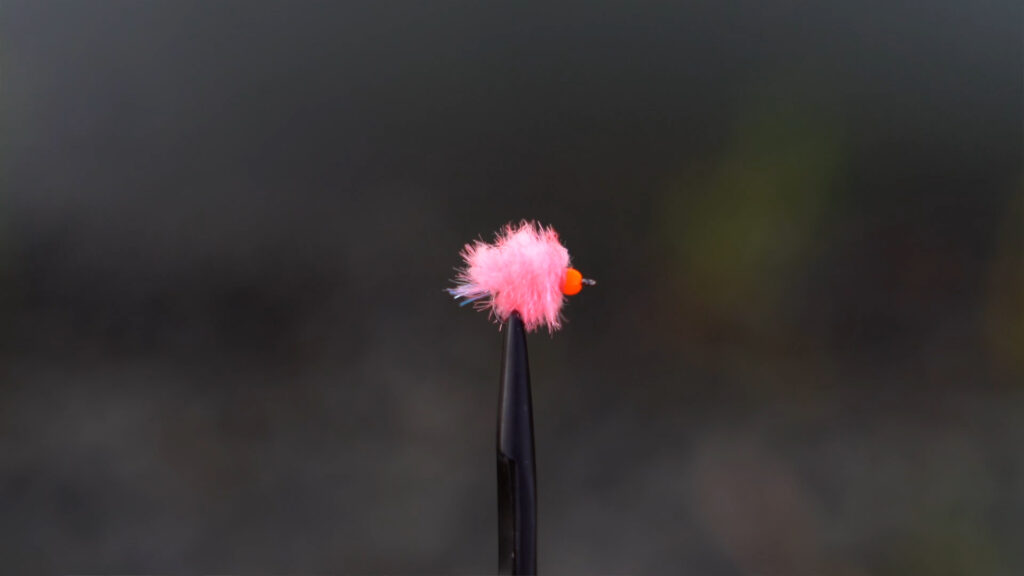
Today’s fly tiers have access to a diverse selection of synthetic materials like Fritz, Jelly Fritz, Daphnia Fritz, and Eggasty (all produced in the U.K., but available in Canada through specialty fly shops). Blob patterns made from these materials in fluorescent orange, sunburst orange, biscuit, prawn, sockeye, and fluorescent pink colours are sure to attract the interest of daphnia-feeding fish. Most blob patterns are tied on wide-gap scud or egg hooks in sizes 12 and 10.
Blob Fly-Fishing Tactics: Strike Indicators
Clusters of suspended zooplankton are fairly motionless in the water. This allows you to present blob patterns suspended under a strike indicator in much the same way as fishing a chironomid. The depth at which you fish the blob is key to having any success. Keep in mind that since zooplankton are photosensitive, it is best to fish the blob in the lower half of the depth zone during the day. For instance, if anchored in seven metres (23 feet of water), suspend your blob 3.5 to 4.5 metres (12 to 14 feet) below the indicator.
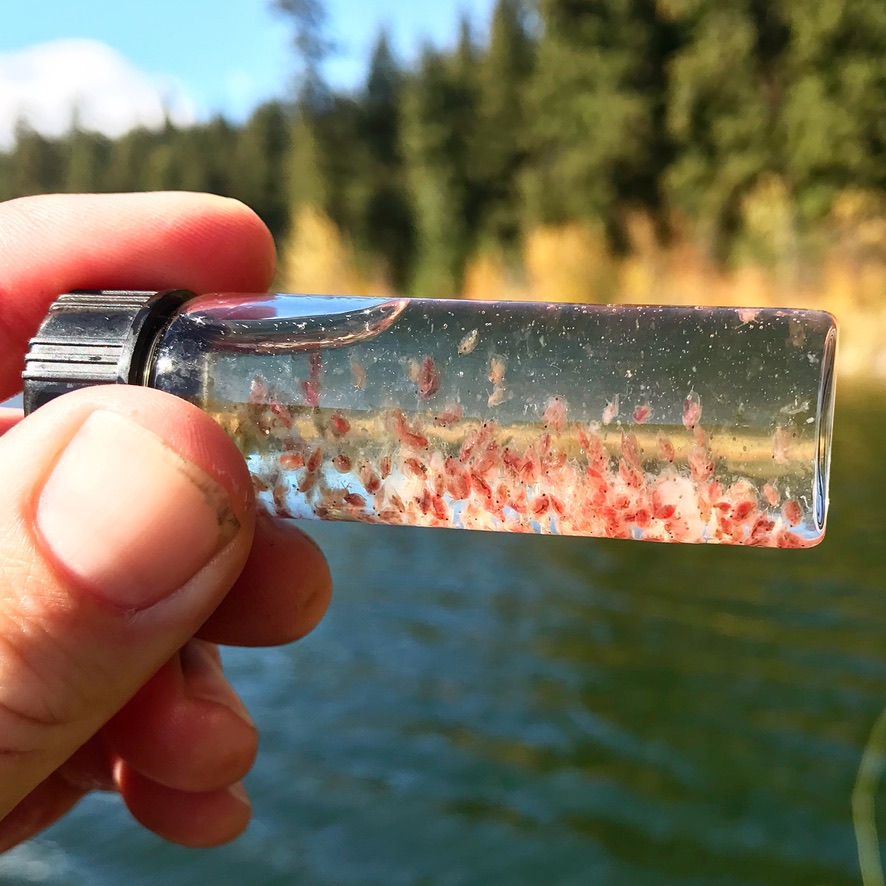
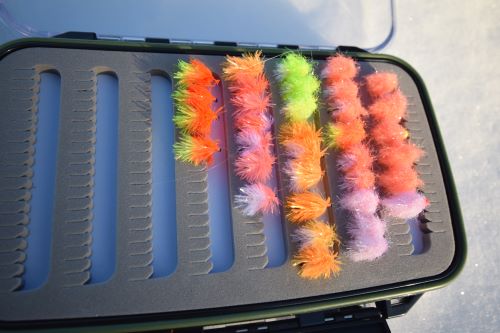
Blob Fly-Fishing Tactics: Sinking Lines
Blobs can also be fished with full sinking lines. This technique works best using very fast, Type 6 or 7 sinking lines, and a blob pattern on a short 120- to 150-centimetre (four- to five-foot) leader. Cast out the depth of line you want your fly to sit at, and allow the fly line to hang straight up-and-down. This is basically still fishing, often referred to as “dangling a fly.”
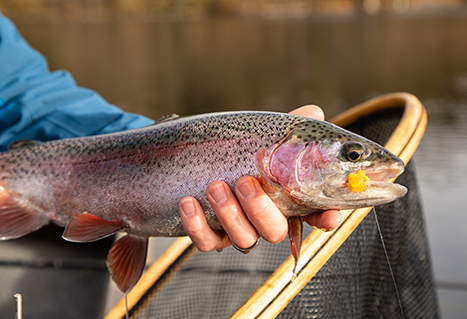
Whether suspended under an indicator or dangled from a sinking line, the strikes are fairly visual. The trout are swimming up to an almost motionless fly, thinking it’s a small cluster or ball of daphnia, and inhaling it. Feeling the fly in its mouth, a fish can spit it out in the blink of an eye. You need to be closely watching the indicator or the tip of your sinking-line rod to make that quick rod set which will hook the fish.
Blob patterns should have some space in your fly box. They may not work every time, but when fish are focussed on zooplankton, these colourful flies can turn a slow day of fishing into a great day of catching.
Author: Brian Chan, Freshwater Fisheries Society of BC Ambassador